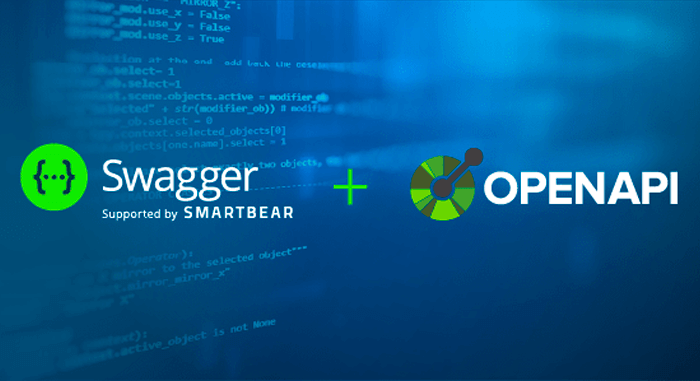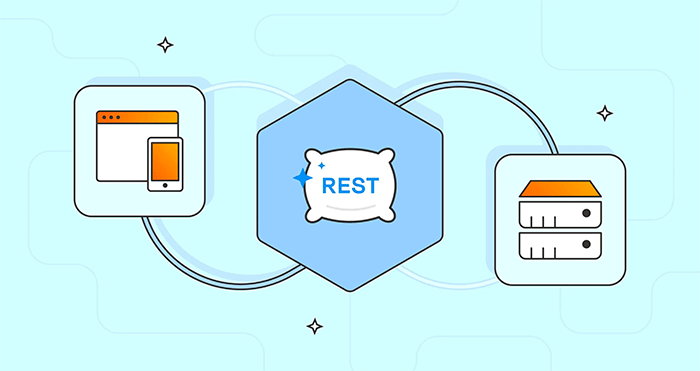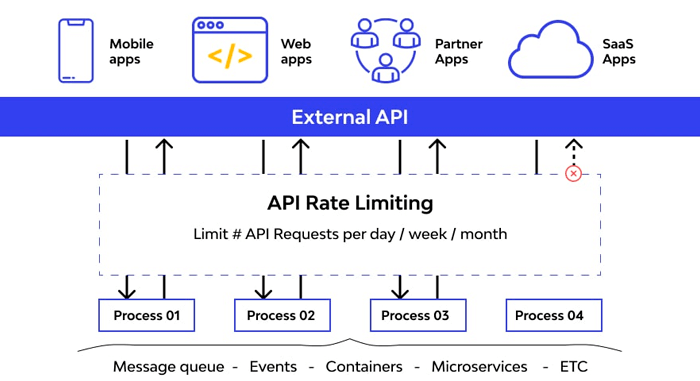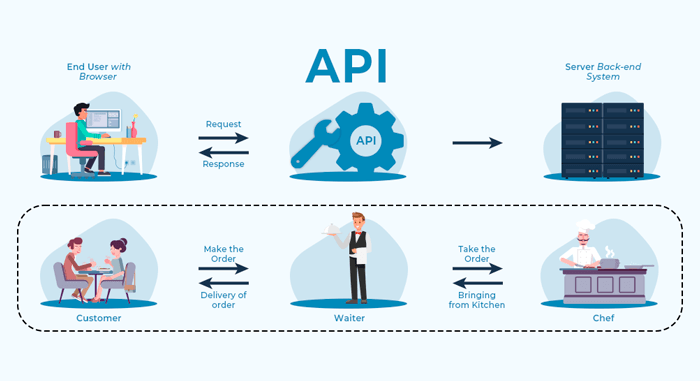Documenting Your API with OpenAPI and Swagger

OpenAPI Specification provides a standardized, language-agnostic format for describing REST APIs, while Swagger tools offer interactive documentation, code generation, and testing capabilities that significantly improve developer experience and API adoption in Java applications.
API Documentation with OpenAPI and Swagger: Complete Implementation Guide
Documenting your API with OpenAPI and Swagger transforms how developers discover, understand, and integrate with your Java services. Poor documentation remains the top complaint among API consumers, leading to support tickets, integration delays, and abandoned adoption attempts. OpenAPI provides a machine-readable contract describing endpoints, parameters, and responses, while Swagger tools generate interactive documentation that developers can explore and test without writing code.
Understanding OpenAPI Specification Fundamentals
OpenAPI Specification, formerly known as Swagger Specification, defines a standard format for describing RESTful APIs. The specification uses JSON or YAML to document paths, operations, parameters, request bodies, responses, authentication mechanisms, and metadata. This machine-readable format enables tooling that generates documentation, client libraries, server stubs, and validation logic automatically.
The specification has evolved significantly since its inception. OpenAPI 3.0 introduced major improvements over the 2.0 version including better request body descriptions, callback definitions, and link objects for describing API workflows. OpenAPI 3.1 aligns more closely with JSON Schema standards, improving validation and reducing learning curve for developers familiar with JSON Schema.
Core OpenAPI Components
- Info object contains API metadata including title, version, description, contact information, and license details
- Paths define available endpoints with their operations, parameters, request bodies, and possible responses
- Components section holds reusable schemas, parameters, responses, and security schemes for reference throughout specification
- Security requirements specify authentication and authorization mechanisms like OAuth2, API keys, or JWT tokens
Each API operation documents HTTP method, path, parameters (query, path, header, cookie), request body schema, and response codes with their schemas. Rich descriptions help developers understand not just the technical contract but business context and usage patterns.
OpenAPI specifications serve as single source of truth for API contracts. Teams can define specifications before implementation begins, enabling contract-first development where frontend and backend developers work in parallel. Alternatively, code-first approaches generate specifications from annotations in existing Java code, capturing API structure automatically.
Implementing Swagger in Spring Boot Applications
Spring Boot applications integrate with Swagger through Springdoc OpenAPI library, which generates OpenAPI specifications from Spring MVC annotations automatically. The library examines controller classes, extracts endpoint information, and produces interactive documentation accessible through Swagger UI.
Adding Springdoc OpenAPI to your project requires minimal configuration. Include the dependency in your build file, and the library automatically configures endpoints for serving the OpenAPI specification and Swagger UI interface. The documentation becomes available at standard paths like /swagger-ui.html and /v3/api-docs without additional code.
Basic Configuration
Configuration customizes documentation appearance, metadata, and behavior. The OpenAPI bean allows setting API information, contact details, license, and external documentation links. Global security schemes define authentication requirements, while server configuration specifies base URLs for different environments.
- API Info configuration provides descriptive metadata displayed prominently in documentation interface
- Custom OpenAPI instance allows programmatic specification modifications beyond annotation capabilities
- Group definitions organize large APIs into logical sections improving navigation and comprehension
- Custom paths and package scanning control which endpoints appear in generated documentation
Annotation-Based Documentation
Springdoc leverages standard Spring annotations like RequestMapping, GetMapping, and PathVariable to extract basic endpoint information. Additional annotations from the OpenAPI library provide detailed descriptions, examples, and constraints that enhance documentation quality significantly.
The Operation annotation describes individual endpoint purposes, adding summaries and detailed descriptions. Parameter annotations document query parameters, path variables, and headers with descriptions, examples, and validation constraints. Schema annotations enrich model documentation with field descriptions, format specifications, and example values.
Response annotations document possible HTTP status codes, their meanings, and response body schemas. This information helps API consumers understand both success scenarios and error handling patterns. Hidden annotation excludes endpoints or parameters from public documentation, useful for internal or deprecated functionality.
Creating Comprehensive API Documentation
Comprehensive documentation goes beyond technical specifications to provide context, examples, and guidance helping developers succeed quickly. Good documentation anticipates questions, explains design decisions, and demonstrates common use cases through practical examples.
Start with clear API overview explaining purpose, capabilities, and key concepts. Authentication section details how to obtain credentials and include them in requests. Getting started guide walks through first API call, demonstrating authentication and basic operations with complete code examples.
Documentation Best Practices
Write descriptions from the user perspective, focusing on what developers need to accomplish rather than internal implementation details. Use active voice and present tense for clarity. Include realistic examples showing actual data rather than placeholder values that provide no context.
- Endpoint descriptions explain purpose and business context beyond technical function definitions
- Parameter documentation includes valid ranges, format requirements, and examples of acceptable values
- Error responses document all possible error codes with explanations and resolution guidance
- Rate limiting, pagination, and filtering conventions explained clearly for consistent API usage
Interactive Examples
Swagger UI transforms static documentation into interactive playground where developers test endpoints without writing code. The Try it out feature populates request forms with example values from the specification, allowing immediate API exploration through the browser.
Providing realistic example values throughout your OpenAPI specification improves the interactive documentation experience dramatically. Examples should use data that makes sense in business context rather than generic placeholders. Multiple examples can demonstrate different scenarios or edge cases.
Request and response examples show exact JSON or XML structure, helping developers understand nested objects and array formats. Including examples for different response codes demonstrates error responses and helps developers implement proper error handling in their applications.
Advanced OpenAPI Features and Techniques
OpenAPI specification supports advanced features enabling sophisticated API documentation that captures complex behaviors and relationships. Mastering these features produces documentation that truly serves as comprehensive API reference.
Polymorphism and inheritance in OpenAPI use discriminator properties to document APIs returning different object types based on context. This feature proves essential for documenting REST APIs with flexible response structures where the actual type depends on resource state or request parameters.
Component Reusability
Components section promotes reusability by defining schemas, parameters, responses, and other elements once and referencing them throughout the specification. This approach maintains consistency, reduces duplication, and simplifies specification maintenance when changes occur.
- Schema components define reusable object models shared across multiple endpoints and operations
- Parameter components standardize common parameters like pagination, sorting, and filtering options
- Response components document standard responses like validation errors or unauthorized access messages
- Security scheme components define authentication methods referenced in security requirements
Links and Callbacks
Links describe relationships between operations, documenting workflows where one API call’s response contains data used in subsequent calls. This feature helps developers understand multi-step processes and reduces confusion about proper API usage sequences.
Callbacks document webhook-style operations where your API makes requests back to client-provided URLs. This documentation proves crucial for event-driven integrations where clients need to understand what data they’ll receive and when callbacks occur.
Extension fields prefixed with x- allow custom metadata beyond standard specification elements. Teams use extensions to document internal information, testing requirements, or integration with proprietary tools while maintaining specification validity.
Code Generation from OpenAPI Specifications
OpenAPI’s machine-readable format enables automatic code generation for clients, servers, and testing tools. OpenAPI Generator and Swagger Codegen produce type-safe client libraries in dozens of languages, accelerating integration development and reducing manual coding errors.
Client generation creates SDK-like libraries with methods corresponding to API operations, proper type definitions, and serialization handling. Generated clients hide HTTP complexity, allowing developers to interact with your API using idiomatic language constructs rather than raw HTTP calls.
Server Stub Generation
Server stub generation produces controller interfaces and model classes matching your OpenAPI specification. Developers implement business logic without writing boilerplate routing and serialization code. This approach enforces specification compliance and catches discrepancies between documentation and implementation early.
- Generated models include validation annotations derived from OpenAPI schema constraints
- Controller interfaces define method signatures matching specification operations exactly
- Exception types correspond to documented error responses ensuring consistent error handling
- Bean validation annotations enable automatic request validation before business logic execution
Contract Testing
OpenAPI specifications enable contract testing where tests verify that actual API behavior matches documented specification. Tools like Pact and Spring Cloud Contract use specifications to generate test cases validating request/response formats, status codes, and data types automatically.
Contract testing catches breaking changes before they reach production. When specifications change, tests fail if implementation doesn’t match, preventing documentation drift that confuses API consumers. This testing approach proves especially valuable in microservices architectures where service contracts must remain stable.
Documentation Maintenance and Versioning
API documentation requires ongoing maintenance as APIs evolve. Stale documentation frustrates developers and damages API credibility. Establishing processes ensuring documentation stays synchronized with implementation prevents these issues and maintains developer trust.
Code-first approaches using annotations keep documentation close to implementation, making updates during development more natural. Developers adding endpoints or modifying parameters see documentation annotations alongside code, prompting updates. CI/CD pipelines can enforce documentation quality by failing builds when annotations are missing or incomplete.
Specification Versioning
Version your OpenAPI specifications alongside API versions. Maintain separate specification files for each major API version, allowing clients to reference documentation matching their integration version. This practice prevents confusion when clients use older API versions with different behaviors.
- Specification files stored in version control track documentation changes over time
- Automated builds generate documentation from specifications ensuring published docs match code
- Breaking change detection tools compare specifications identifying potential compatibility issues
- Deprecation notices in specifications warn developers about upcoming changes and migration paths
Continuous Documentation
Treat documentation as integral part of development process rather than afterthought. Include documentation requirements in definition of done for features. Code reviews should verify not just functionality but completeness and accuracy of API documentation updates.
Automated specification validation in CI pipelines ensures specifications remain valid as code changes. Linting tools check for common problems like missing descriptions, unrealistic examples, or inconsistent naming. These checks maintain documentation quality consistently across team members and over time.
Publishing documentation updates automatically when code deploys keeps documentation synchronized with live API behavior. Separate documentation sites for different environments help developers understand differences between development, staging, and production configurations.
Customizing Swagger UI Experience
Swagger UI customization tailors documentation appearance and behavior to match your brand and developer needs. Configuration options control layout, authentication flows, and interactive features. Custom CSS styling adapts visual design to corporate branding guidelines.
Deep linking enables sharing URLs pointing to specific operations, helping developers reference exact endpoints in discussions and support tickets. Persistent authorization allows developers to authenticate once and try multiple endpoints without re-entering credentials repeatedly.
UI Customization Options
- Custom logo and favicon reinforce brand identity in documentation interface
- Layout configuration controls operation grouping, sorting, and default expansion behavior
- Request interception enables custom headers, parameter transformation, or request logging
- Custom validators add business-specific validation rules beyond OpenAPI schema capabilities
Plugin system extends Swagger UI functionality with custom components and behaviors. Plugins can add custom sections, modify request/response displays, or integrate with external systems. This extensibility allows creating documentation experiences perfectly matched to specific API characteristics and developer needs.
Alternative documentation renderers like ReDoc or RapiDoc offer different presentation styles. Some teams prefer ReDoc’s three-panel layout with navigation, content, and code samples. Evaluating different renderers helps find the best fit for your API complexity and target audience preferences.
| Documentation Aspect | Key Benefit |
|---|---|
| OpenAPI Specification | Machine-readable contract enabling code generation and validation |
| Swagger UI | Interactive documentation with try-it-out functionality for rapid testing |
| Code Generation | Automated client libraries and server stubs reduce integration effort |
| Contract Testing | Ensures API implementation matches specification preventing documentation drift |
Frequently Asked Questions
Code-first works well for existing APIs and teams preferring implementation-driven development, using annotations to generate specifications automatically. Specification-first enables parallel frontend and backend development with clear contracts defined upfront. Choose based on team workflow and whether API design or implementation comes first in your development process. Many teams successfully combine both approaches in different contexts.
OpenAPI security schemes support OAuth2 flows including authorization code, implicit, client credentials, and password flows. Define the security scheme in components section specifying authorization and token URLs, available scopes, and flow type. Apply security requirements at operation or global level. Swagger UI then handles OAuth2 authentication flows automatically, allowing developers to test protected endpoints interactively.
OpenAPI 3.0 introduced major improvements including better request body descriptions with explicit content types, callback definitions for webhooks, link objects describing operation relationships, and improved server URL templating. Component reusability expanded with more reusable elements. OpenAPI 3.0 specifications are not backward compatible with 2.0, requiring migration when upgrading. Most modern tools support 3.0 exclusively or primarily.
Use code-first generation from annotations to keep documentation synchronized with implementation automatically. Include documentation quality checks in CI/CD pipelines failing builds for missing or incomplete documentation. Make documentation updates part of definition of done for features. Implement contract testing verifying API behavior matches specification. Regular documentation reviews catch drift before it becomes significant problem requiring major remediation effort.
OpenAPI is designed specifically for REST APIs and does not support GraphQL or gRPC naturally. GraphQL has its own introspection system and schema language, while gRPC uses Protocol Buffers. However, you can expose REST gateways to GraphQL or gRPC services and document those REST endpoints with OpenAPI. For native documentation, use GraphQL schema and tools like GraphiQL, or Protocol Buffer definitions with gRPC reflection.
Conclusion
OpenAPI and Swagger transform API documentation from static text into interactive, testable, and machine-readable contracts that accelerate integration development and improve developer experience. The standardized specification format enables powerful tooling for code generation, validation, and testing while providing developers with clear, comprehensive API references.
Success with OpenAPI documentation requires choosing the right approach for your team workflow, maintaining documentation alongside code changes, and customizing the documentation experience for your specific developer audience. Whether using code-first generation or specification-first design, treating documentation as integral part of development process rather than afterthought ensures APIs remain approachable and well-understood. Investing in quality documentation pays dividends through reduced support burden, faster integrations, and increased API adoption. The combination of OpenAPI’s comprehensive specification capabilities and Swagger’s interactive tooling provides everything needed to create world-class API documentation in Java applications.




